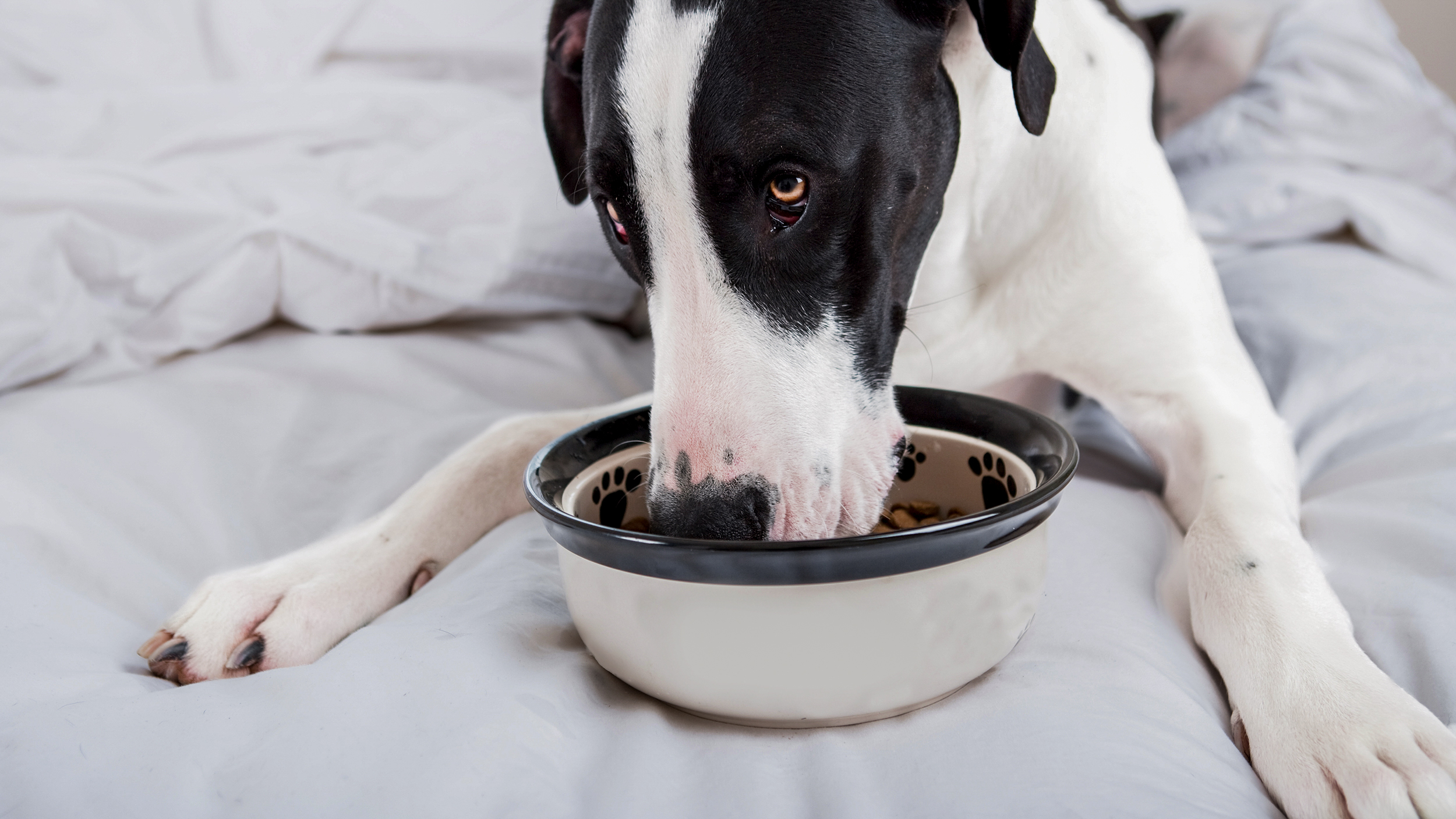How your dog's nutrition needs change with age

Growing puppies, fully grown adults and mature dogs all have different nutritional requirements. As a consequence, their diet needs to be adapted in every stage of life to ensure the dog remains as healthy as possible.
Aging dog nutrition
Aging dogs have a significantly different nutritional requirement to puppies, and even adult dogs. Good care is essential if a dog is to remain in good health throughout its life. Regular physical activity will ensure that the dog maintains its muscle mass and controls its weight. The condition of teeth, skin, and coat should also be monitored.In terms of energy requirements, intake should be adapted to the animal's activity level, which depends on its age and any health concerns. An arthritic dog will move around less and so expend less energy, putting it at risk of unhealthy weight gain. A low-energy diet is only imperative if the dog is overweight. It is very important not to assume that reduced enthusiasm for physical exercise is a normal consequence of aging. The dog must be examined to check whether it is suffering from a disease.
Regular weighing and medical check-ups are the best way to ensure that any problems caused by age are detected at the earliest opportunity.
Nutrition for aging dogs
Aging is also accompanied by the modification of digestive capacities and particular nutritional requirements, so food for aging dogs should have the following characteristics:
Higher vitamin C and E content
These nutrients have antioxidant properties, protecting the body against the harmful effects of the oxidative stress linked to aging.
High-quality protein
Older dogs are less effective at using dietary protein than younger dogs due to their reduced digestive function. Improving the quality of protein is the main goal here. A fallacy in some countries is that protein is responsible for kidney failure. In fact, this is not the case. Kidney failure is a chronic, irreversible disease that is more common in older dogs. It's recommended to reduce phosphorus content in foods to slow down the progression of this disease. However, it's important to speak to your veterinarian first and allow them to diagnose the condition before making any dietary changes.
Higher proportion of the trace elements iron, copper, zinc, and manganese
These nutrients help to keep the skin and coat in good condition. Including these nutrients in the form of organic salts, which are much easier to assimilate than mineral salts, makes it more likely that they will be used in the metabolism of dogs with a less effective digestive system.
Higher quantity of polyunsaturated fatty acids
Soy oil or, even better, borage oil or fish oil are also used to maintain the quality of the coat. Dogs normally produce these fatty acids, but aging can affect this physiological process.
Slightly higher fiber content to act as "ballast"
Including a higher fiber content will help limit the risk of constipation, which can accompany the reduction of physical activity in an aging dog.As they age, dogs increasingly suffer from dental problems. To ensure they continue to eat in sufficient quantities, the shape, size and hardness of their kibble should be taken into consideration.

Food for aging dogs
A dog that reaches three quarters of its expected lifespan is regarded as an aging dog. The signs of aging will start to become more and more apparent when a dog reaches a certain age. The signs may be more obvious at 12 years for small dogs, 10 years for a medium-sized dog and 8 years for a large dog.
Dietary measures to help combat the signs of aging need to be intensified when dogs enter this life stage. This will help them to stay healthy for as long as possible. The following factors are especially important:
Improving immunity and increasing resistance to infection
There are several nutrients, including beta-carotene, vitamin E and C and minerals such as zinc, that have been shown to support a healthy immune system, which is weaker in aging dogs.
Improving the beauty of skin and coat
The health and beauty of the skin and hair is dependent on the adequate and regular intake of specific substances. Borage oil has a positive effect on the sheen of the hair and the elasticity of the skin. Zinc is recommended for aging dogs with a coat that is in poor condition.
Alleviating arthritis
Glucosamine and chondroitin sulfate and EPA/DHA are nutrients that help to increase mobility in aging dogs. Dogs with osteoarthritis showed improved mobility when they were fed diets with these nutrients. Some newer diets have now been developed that include curcuma extract, polyphenols and hydrolyzed collagen. They have been proven to be efficient in improving mobility in aging dogs, therefore improving their quality of life.
That being said, aging dogs are not all the same. A healthy aging dog should not be on the same diet as an aging dog with health issues.
Regular check-ups and health screens will ensure that any health problems are detected at the earliest opportunity. In many cases, diet can play a role in preventing or at least limiting the expression of clinical signs of chronic disease in aging dogs. Your veterinarian will be able to recommend the most appropriate food.
Like & share this page